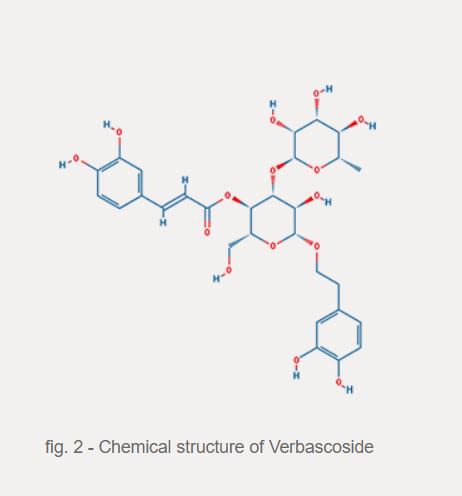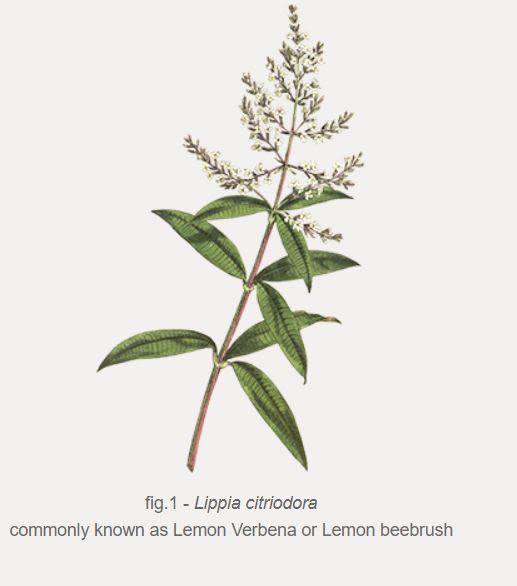Enhanced TDS
Knowde-enriched technical product data sheet
Identification & Functionality
- Active Component
- Chemical Family
- Ingredient Name
- Food Ingredients Functions
- Pharma & Nutraceuticals Functions
- Ingredients
- Verbascoside
- Technologies
- Product Families
- Chemical Structure

Features & Benefits
- Labeling Claims
- VERBASCOSIDE: Lippia citriodora extract

Lippia citriodora or Lemon Verbena is synonymous with Aloysia triphylla, Verbena citriodora and Verbena triphyilla (fig.1).
Plants of genus Lippia were and are still generally used by indigenous populations of South America and by the traditional Chinese medicine for the treatment of respiratory diseases such as cold and flu, cough and bronchitis.Additionally, L. citriodora leaves are used as seasoning for food preparations or flavoring for beverages.
Lippia is used in medicine as a relaxant and carminative herb that counteracts stress related conditions, especially those that affect the stomach.
Other medical uses regard the treatment of dyspepsia, headaches, neuralgic pain and vertigo. From cell culture of Lippia citriodora, ABR extracts the ingredient VERBASCOSIDE.Verbascoside (known also as Acteoside) is a secondary metabolite produced by the plant as defense against insects and parasites.
Verbascoside is a phenylpropanoid widely distributed in the plant kingdom and its structure is characterized by a caffeic acid and a hydroxytyrosol residues bound to a glucopyranoside at its opposite sides through an ester and a glycosidic bond respectively (fig.2).
Applications & Uses
Technical Details & Test Data
- Verbascoside - biological effects
Scientific literature attributes to Verbascoside various biological properties including anti-hepatotoxic, antinflammatory, anti-nociceptive, antioxidant and antihemolytic effects.
Verbascoside also demonstrated relevant effects in the reduction of symptoms in chronic pathologies and conditions such as:
- Arthritis
- Hypertension
- Parkinson’s disease
- Alzheimer’s disease
- Estrogenic mediated diseases
- Allergy type 1
- Intestinal mucosytis